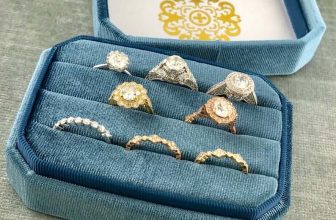
Youth fall in love with diamonds because of their high ecological and human costs. How is your alternative laboratory artificial diamond measured? Laboratory-grown diamonds have the same chemical and physical properties as diamonds, in addition to the perceived cost savings and environmental benefits.
First, Lab-grown diamond is also a diamond: physically, chemically, and optically identical to the mined diamond.
Natural diamonds are forged’ under the great pressure and high temperature of the Earth’s mantle about 100 miles underground. Most of it founded 1 to 3 billion years ago when our planet was warmer than it is today.
Diamonds developed in the laboratory also made using the same process, under extreme pressure and heat but in controlled temperature and pressure in a machine rather than under the crust. There are two ways to grow diamonds. In either case, you start with the “seed” (flat slider) of another diamond. The first laboratory diamonds were grown’ using a high-pressure, high temperature (HPHT) system, with the seeds then placed under a small amount of pure graphite carbon and exposed to temperatures of about 1500 ° C and subjected to a pressure of about 1.5 million pounds per square inch in the camera.
Recently, another way to grow diamonds has discovered chemical vapor deposition (CVD).
It involves placing the seed in a closed chamber filled with a carbon-rich gas and heating it to about 800 ° C. Under these conditions, the gas begins to “stick” to the seed and, the diamond carbon atoms grow atom by atom.
The technology behind laboratory diamonds has made significant advances in recent years, enabling companies to grow higher quality diamonds faster and cheaper. It means increasing competition between laboratory companies for diamond and diamond mining. According to a report from the World Diamond Center in Antwerp (AWDC), the cost of making a lab-developed CVD is $ 300 to $ 500 per carat, up from $ 4,000 per carat in 2008.
Laboratory grown diamonds are a fast-growing trend in the industry.
Young diamond buyers are attracted to lab grown diamonds for price, transparency and environmental reasons. According to the AWDC report, this market segment is growing 15% to 20% per year. Growth is expected to continue as more jewelers sell laboratory diamonds and more laboratories open up.
Environmental data
But laboratory diamonds are not without guilt. The lack of transparency makes it difficult to extract accurate data to compare the carbon footprint of mined diamonds and laboratory diamonds, but the energy required to produce laboratory diamonds is significant. A report on the subject commissioned by the Association of Diamond Producers shows that greenhouse gas emissions from mining natural diamonds are three times less than emissions from lab grown diamonds. It should be noted that DPA represents the seven largest diamond mining companies in the world, including De Beers, Alrosa and Rio Tinto.
However, some lab diamond companies have been warned by the US Federal Trade Commission to be careful about presenting themselves as “environmentally friendly” without evidence to back up these claims. Among them are companies such as Ada Diamonds and Leonardo DiCaprio, which are backed by US diamond foundries. The latter, however, states that Natural Capital Partners has been certified as climate neutral by a third party and uses only renewable energy.




